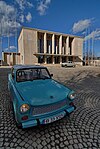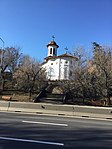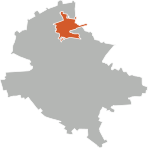Nicolae Minovici Folk Art Museum
Art museums and galleries in BucharestArt museums established in 1906BăneasaFolk art museums and galleriesHistoric monuments in Bucharest ... and 2 more
Houses completed in 1905Neo-Brâncovenesc architecture

The Dr. Nicolae Minovici Folk Art Museum (Romanian: Muzeul de Artă Populară „Prof. Dr. Nicolae Minovici”) is a museum located at 1 Dr. Nicolae Minovici Street in the Băneasa district of Bucharest, Romania. Initially built as a retreat on the city outskirts for Nicolae Minovici between 1906 and 1907, the house evolved into Bucharest's first folk art museum, with an expansive collection of ethnographic displays. The building was designed by the owner's friend, Cristofi Cerchez, in the Romanian Revival style.The museum building is listed as a historic monument by Romania's Ministry of Culture and Religious Affairs.
Excerpt from the Wikipedia article Nicolae Minovici Folk Art Museum (License: CC BY-SA 3.0, Authors, Images).Nicolae Minovici Folk Art Museum
Strada Doctor Nicolae Minovici, Bucharest Herăstrău (Sector 1)
Geographical coordinates (GPS) Address Phone number Website External links Nearby Places Show on map
Geographical coordinates (GPS)
| Latitude | Longitude |
|---|---|
| N 44.4843 ° | E 26.0753 ° |
Address
Muzeul de Artă Populară "Prof. Dr. Nicolae Minovici"
Strada Doctor Nicolae Minovici 1
013712 Bucharest, Herăstrău (Sector 1)
Romania
Open on Google Maps










